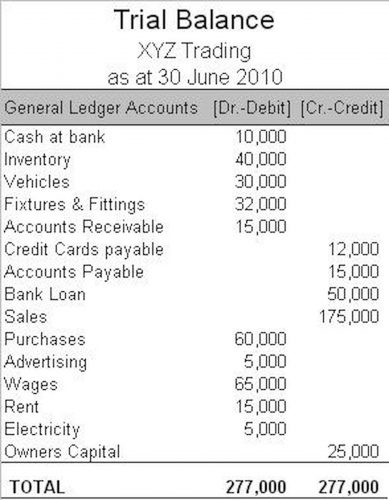
The Y category includes those that fluctuate in a somewhat predictable manner, such as seasonal or holiday products. The rest fall into category Z, which includes the most unpredictable products with the highest demand variability. ABC classification is a ranking system for identifying and grouping items in terms of how useful they are for achieving business goals. Bookkeeping for Startups While ABC analysis is a powerful tool, it’s not without its challenges. Let’s acknowledge the potential drawbacks and explore strategies to overcome them, ensuring you harness the full power of ABC analysis while navigating its complexities.
- ABC identifies individual activities and assigns their related costs to products based on the actual consumption.
- The ABC model is a vital framework in Applied Behavior Analysis (ABA) therapy, particularly for children on the Autism Spectrum Disorder (ASD).
- You may see definitions that separate alphabet knowledge as a prerequisite skill and include decoding as part of the alphabetic principle.
- Take, for instance, a civil engineering company that’s been contracted to build a bridge.
The Evolution of ABC in Modern Accounting

They have to consider these two extremes of the product line and have to strike a balance between them. An organisations product line is a group of closely related products that are considered a unit because of marketing, technical or end-use considerations. In order to analyse each product line, product- line managers need to know two factors. A distinct unit within a brand or product line distinguishable by size, price, appearance or some other attributes.
What is the objective of the ABC method?
This method provides a more accurate cost per unit, as it assigns more indirect costs (overhead) into direct costs normal balance compared to traditional costing methods. However, it is more complex and requires almost an extensive analysis of the company’s processes. It may not be necessary or feasible for small or less complex enterprises. Central to the ABC philosophy is the notion that costs are inherently activity-driven.

Why is ABC a more accurate costing method compared to traditional costing?
This ongoing review will help maintain efficiency in your inventory management system. This includes the cost of each item, its sales frequency, and annual usage value. Accurate records are crucial as they form the basis for categorizing your inventory. Inventory data can be sourced from automated systems, sales abc principle definition history, and inventory control efforts.

Identifying Cost Drivers in ABC

Once the overhead rates are computed, they are applied to the products or services based on their specific usage of the different activities. The result is a more accurate representation of the resources consumed by each product or service. Firstly, the implementation process of ABC can be time and resource-consuming, owing to the granularity that ABC demands in cost allocation.
However, due to them being used periodically, having a large amount of them in inventory at all times would be unfeasible. You can also assign separate key metrics and reporting practices to different class items to get better insight into their performance. In fact, C-items can most often be purchased in bulk or by using a just-in-time approach. B-category items should receive less attention than A-class items, but should not be overlooked. It is strongly recommended to use consumption value or revenue generated by an SKU as the criterion, as quantity or volume is often not a great indicator of business value.
Products
- Accurate pricing of goods and services is one of the most difficult things business owners need to tackle.
- Under traditional approaches, some idle capacity may be incorporated into the overhead allocation rates, thereby potentially distorting the cost of specific output.
- Using the Pareto principle, classify your inventory into three categories.
- Transaction drivers include number of transaction which results in overhead costs e.g., inspections performed, setups undertaken, number of purchase orders etc.
Defining observable behaviors is critical because it leads to precise analysis and consistent reporting. Clear definitions allow multiple observers to recognize the same behavior, enhancing reliability in data collection. For instance, rather than simply noting “a child acted out,” specifying the behavior as “yelling” or “refusing instructions” provides more actionable insights.

A cost pool is essentially a “bucket” where similar costs are accumulated. Think of these as pots of overhead costs that need to be assigned to the activities that incurred them. By segmenting costs into these pools, it becomes easier to trace them back to the products or services that generated them.



